Results 6,501 to 6,510 of 12094
Thread: Anandtech News
-
12-02-16, 10:21 AM #6501
Anandtech: The Fnatic Rush G1 Mechanical Keyboard Review
In this review we are having a look at the Rush G1, the first keyboard from Fnatic, the professional eSports team who is making an attempt in entrepreneurialism. Their brand name, Fnatic Gear, supplies only apparel and peripherals designed specifically with eSports in mind.
More...
-
12-02-16, 11:10 AM #6502
Anandtech: ASRock Upgrades Beebox-S SFF PCs with Kaby Lake CPUs
ASRock has introduced updated versions of its Beebox-S small form-factor PCs. The new NUC-like systems are powered by Intel’s Core i5-7100U/i3-7200U CPUs featuring the Kaby Lake microarchitecture, but apart from that the computers are identical to their predecessors running the Skylake chips. ASRock positions its Beebox-S both for general-purpose computing as well as for multimedia playback.
Just like their predecessors, the Asrock Beebox-S comes in a small black enclosure (110×118.5×46 mm, 0.6 L) that is akin to other Intel NUC-like systems. Since the PC is based on Intel’s Kaby Lake processor, it has rather advanced video playback capabilities, which make it a good candidate for an HTPC. Moreover, ASRock specifically mentions HDMI 2.0 and support for 4Kp60 with 10-bit HDR output as one of the key features of the new Beebox systems. The manufacturer also installed an IR receiver compatible with a bundled remote controller, further emphasizing a possible positioning of the Beebox-S.
When it comes to connectivity, the SFF PC seems to be good for both office and the living room. The system is equipped with an HDMI 2.0 output (implemented using an LSPCon controller, most likely a MegaChips MCDP2000, and supporting 4096×2160 pixels at 60 Hz as well as HDR10) to connect to modern 4Kp60 UHDTVs (not sure about HDCP 2.2 support, but it should logically be there), an HDMI 1.4 as well as a DisplayPort 1.2. The Beebox-S also has one USB 3.0 Type-A and one USB 3.0 Type-C headers as well as a 3.5 mm TRRS connector for headsets on the front panel. Tthe back panel features two more USB 3.0 ports and one GbE connector.
The heart of the ASRock Beebox-S is either Intel’s Core i3-7100U or Core i5-7200U microprocessor in BGA packaging with integrated HD Graphics 620. The system can also be equipped with up to 32 GB of DDR4-2133 memory (two SO-DIMM slots), an M.2-2280 NVMe SSD and a 2.5” SSD/HDD depending on demands of exact customer. Meanwhile, Intel’s 802.11ac Wi-Fi + BT 4.0 wireless module is pre-installed.
This week Newegg started to sell the Beebox-S 7100U and Beebox-S 7200U SFF PCs for $291 and $349, respectively. As it appears that retail pricing of the new Kaby Lake-based ASRock Beebox-S SFF PCs is higher that of the Skylake-powered Beebox-S, which are available for $264 to $320. One more thing to note about the new Beebox-S systems is that they only come in black enclosures, whereas their predecessors feature black, white, silver and golden finishes. We haven't heard of other colors coming, although that may change in the future.ASRock Beebox-S SFF PCs Based on Intel's Kaby Lake CPUs Beebox-S 7200U Beebox-S 7100U CPU i5-7200U
2C/4T
2.5 GHz
3.1 GHzi3-7100U
2C/4T
2.4 GHzGPU HD Graphics 620
24 EUs
up to 1050 MHzRAM 2×DDR4-2133 SO-DIMMs (up to 32 GBs) SSD Up to M.2-2280 SSDs HDD 2.5"/9.5 mm GbE Intel i219-V (?) Wi-Fi Intel Dual Band Wireless-AC 3160 (?)
1×1 802.11ac + BT 4.0
(via M.2 2230 card)I/O USB 3.1 (10 Gbps) via ASMedia ASM1142
1×USB 3.1 Type-C
3×USB 3.0 Type-AVideo 1×HDMI 2.0 (HDCP2.2) via LSPCon
1×DisplayPort 1.2Audio Realtek ALC283
TRRS and HDMI connectorsSize H: 46 mm
W: 118.5 mm
L: 110 mmFull
SpecsBeebox-S 7200U Beebox-S 7100U
Gallery: ASRock Upgrades Beebox-S SFF PCs with Kaby Lake CPUs
(L2)_thumb.jpg)
(L3)_thumb.jpg)
(L1)_thumb.jpg)
Related Reading:
- ASRock Beebox-S 6200U Review - An Alternative to the Skylake NUC
- GIGABYTE Updates BRIX SFF PCs with Intel’s Kaby Lake CPUs
- ECS Preps LIVA Z: Apollo Lake-Based Nettop with 4K and USB-C Support
More...
-
12-02-16, 12:09 PM #6503
Anandtech: Seagate Announces Duet: An Amazon Cloud-Syncing Portable HDD for $99.99
Seagate this week has continued to introduce special-purpose storage devices tailored for select applications: the company is launching its Duet external hard drive that automatically downloads and uploads content from (and to) Amazon Drive to enable instant and offline access to data stored in the cloud. The HDD will be useful for those,who store up to 1 TB of data in the cloud but prefer to have local copies as well.
The Seagate Duet is a re-badged Backup Plus Portable Drive with 1 TB capacity and special software that syncs it with the Amazon Drive service. The drive uses a USB 3.0 interface to connect to computers (running Windows or macOS) and has 5400 RPM spindle speed and two platters featuring PMR technology. The HDD needs to be plugged into a PC with internet access in order to connect to the Internet to upload or download data. Users who would like to use the drive like a normal external HDD will have to reformat it (it is doubtful that there will be a lot of such people as the drive costs considerably more than the regular external 1 TB HDDs without cloud-syncing technology).
During the initial setup, the Duet drive logins to a customer’s Amazon account and then automatically syncs photos, videos, files, documents, movies and music. After a file is added to the Duet drive, it will be uploaded to the cloud and then available from almost everywhere using any device, including smartphones and tablets that have special apps installed. Alternatively, every file uploaded from a mobile device to Amazon's Drive eventually ends up on the Seagate Duet drive when the device is synchronized.
The Seagate Duet drive will be available exclusively from Amazon in the U.S. for $99.99, which is considerably more expensive than the actual retail price of Seagate’s Backup Plus Portable 1 TB model ($55 - $60). For new U.S. Amazon Drive customers the Duet will come with one free year of Amazon Drive Unlimited Storage (a $59.99 value), which makes the external storage device somewhat more attractive. Meanwhile, existing Amazon Drive customers will essentially pay $40 - $45 for cloud-syncing software. The HDD is covered by a two-year limited warranty from Seagate.
Gallery: Seagate Announces Duet: Cloud-Syncing Portable HDD





Related Reading:
- Seagate Introduces Game Drive SSD for Xbox (360 and One): 512 GB SSD for $199
- Seagate Introduces Backup Plus Portable 5 TB: The Largest Portable HDD to Date
- Western Digital Expands My Passport External USB 3.0 Drives To 4 TB
More...
-
12-02-16, 02:42 PM #6504
Anandtech: Enermax Enters SFX Game with Revolution SFX PSUs
As small form-factor gaming PCs gain traction, more companies enter the scene with small form factor power supplies. Enermax this week introduced its first power supplies in SFX form-factor designed for high-performance systems. The company is now the fifth major supplier of PSUs to offer gaming-grade SFX power supplies, such that enthusiasts now have five brands to choose from, up from two early this year.
The Enermax Revolution SFX family currently includes two models rated for 550 W (ERV550SWT) and 650 W (ERV650SWT) power output. The new PSUs are compliant with the SFX12V V3.3 and ATX12V V2.4 specifications as well as carry the 80 Plus Gold certification badge. The power supplies come in standard 100-mm depth chassis and feature 80-mm fans that do not operate at loads below 30% as well as a modular design with flexible flat-type cables to ensure easy cable management. Enermax also says that the new PSUs use Japanese electrolytic capacitors rated to handle 105°C temperature and have special protection circuitry to ensure durability and safety.
The Revolution SFX power supplies from Enermax have EPS12V power connectors (one 24-pin and a 4+4-pin connector), two PCIe 8-pin power connectors, six SATA power connectors and four 4P Molex plugs. The presence of two 8-pin (6+2) auxiliary power connectors makes the Revolution SFX compatible with virtually all high-end graphics cards released in the last couple of years, including NVIDIA’s GeForce GTX 1070/1080 that need only one 8-pin plug as well as AMD’s Radeon R9 Fury X that require two 8-pin power connectors. Not all gaming-grade SFX PSUs have two 8-pin power connectors and thus Enermax deserves a credit for this feature.Enermax Revolution SFX Series Connector type 550 W
ERV550SWT650 W
ERV650SWTATX 24 Pin 1 EPS 4+4 Pin 1 PCI-E 6+2 Pin 2 SATA 6 4P Molex 4
Both Revolution SFX PSUs come with an SFX to ATX adapter brackets and can be installed into SFX and ATX/Mini-ATX builds. The Revolution SFX 650 W is the most powerful SFX PSU in a 100-mm depth enclosure (SilverStone has 700 W SFX PSUs, but they are 30 mm deeper), hence, it is logical that it can be installed not only into tiny SFX cases, but into general gaming PCs as well. Truthfully, the amount of power connectors supported by both power supplies seems like an overkill for an SFX system, whereas the presence of four 4P Molex plugs indicates that the developers did not forget about those who use either special-purpose hardware.Enermax Revolution SFX Series DC Output Specifications ERV550SWT ERV650SWT Rated Combined Rated Combined +3.3V 18 A 90 W 18 A 90 W +5V 15 A 15 A +12V 45.8 A 549.6 W 54 A 648 W -12V 0.3 A 3.6 W 0.3 A 3.6 W +5Vsb 3 A 15 W 3 A 15 W Total Power 550 W 650 W
The Enermax Revolution PSUs are expected to hit the market shortly as typically announcements are made about a month ahead of actual availability (though, we do not know whether they are set to become available this year, in time for new PCs ahead of holidays). The 550 W version is set to cost $109.99, whereas the 650 W PSU is to be priced at $124.99.
Gallery: Enermax Enters SFX Game with Revolution SFX PSUs





Related Reading:
- Enermax SteelWing Small Form Factor PC Chassis: Aluminum and Glass, $160
- Lian Li PC-Q37 Announced: Two-Stage Mini-ITX Chassis with Tempered Glass
- The SilverStone SX700-LPT SFX 700W PSU Review
- Thermaltake Releases New SFX PSUs: 450W and 600W, rated at 80 PLUS Gold
- FSP Enters the Market of High-Wattage SFX PSUs with Dagger
More...
-
12-02-16, 04:31 PM #6505
Anandtech: HMD Closes Nokia Brand and Patents Deal with Microsoft, Smartphones Due in
HMD Global and FIH Mobile on Thursday announced that they had completed their buyout of Nokia assets from Microsoft which opens a way for return of Nokia branded smartphones to the market. As expected, HMD and FIH will keep selling Nokia-branded feature phones in developing countries but will add a range of android-based smartphones and tablets to the lineup in 2017. The two companies hope that relationships with operators as well as manufacturing assets (Foxconn) will be instrumental for making their endeavor a success.
As reported earlier this year, HMD Global and FIH Mobile, a subsidiary of Hon Hai/Foxconn Technology Group (we will call the company “Foxconn” for simplicity), paid Microsoft approximately $350 million in cash for various Nokia-related assets. Under the terms of the agreement, HMD got exclusive rights to use the Nokia brand on mobile phones and tablets globally (except Japan) for the next 10 years, standard essential cellular patent licenses, software for feature phones and some other intellectual property. Meanwhile, Foxconn got a manufacturing facility in Hanoi, Vietnam, which is used to manufacture Nokia-branded devices along with customer contracts, critical supply agreements, sales and distribution assets (in fact, these will be owned by a subsidiary of FIH called TNS and HMD will have rights to acquire TNS over the next ten years) and so on. HMD and Foxconn will jointly develop, manufacture and sell Nokia-branded devices, whereas Nokia will participate in development and will receive royalties covering both brand and IP rights from HMD for sales of every Nokia-branded product. The three companies are poised to work together because they critically depend on assets owned by each other.
In its announcement on Thursday, HMD reaffirmed plans to introduce a range of Android-based smartphones and tablets in 2017. The company’s announcement was short on details, but it confirmed that the devices will be jointly developed with Foxconn under supervision of Nokia (which intends to control certain aspects of design, performance, and feature-set of the devices), who has know-hows not only in high-volume manufacturing but also in device engineering. Given the short amount of time that HMD, Foxconn and Nokia had to design their new devices, expect the latter to use already known hardware platforms, but add certain elements for differentiation. We do know that Nokia has developed its own UI for Android called Z Launcher, hence it is logical to expect the company to expand the project for Nokia-branded smartphones. Meanwhile, since a lot of important Nokia IP (e.g., PureView imaging, ClearBlack display, etc.) remains at Microsoft, three companies will have to either develop certain technologies from scratch or use off-the-shelf solutions. Such approach has pros and cons: on the one hand, it is hard to create a unique device based on popular platforms; on the other hand, it is possible to build a device in a relatively short amount of time. Hence, expect HMD Foxconn and Nokia to reveal their first smartphone already in the first half of 2017.
Right now, the core business of HMD and Foxconn is Nokia-branded feature phones that are popular primarily in developing countries. On Thursday, HMD also announced the Nokia 216 handset with a 2.4” display running the Nokia 30-series software that will be inexpensive but will still provide basic “smart” functionality like Internet browsing and multimedia playback. Even though sales of such phones are rapidly decreasing, there are still hundreds of millions of such devices sold every year. HMD naturally hopes that it will be able to replace feature phones with inexpensive smartphones and thus will capture a sizeable chunk of the market. As such, expect HMD to focus on not only advanced models for the U.S. and Europe, but also on affordable smartphones for countries like India and Russia, where the brand is particularly strong and where reasonably priced phones are popular. From a market share point of view, inexpensive models are more important than the flagship devices. Nonetheless, Xiaomi and some other makers clearly demonstrated how fine flagship devices affect brand recognition, hence, they are crucial for success.
Wrapping things up, the deal between Microsoft, HMD Global and FIH Mobile is now closed and Nokia-branded smartphones (and tablets) are on their way back to the market. It is unlikely that we will hear about them anything at CES, but HMD Global will be present at MWC 2017 and this is where the firm will likely showcase at least some of the upcoming products or at least their key features.
Related Reading:
- Nokia Is Set to Return to Smartphones and Tablets: What to Expect?
- Microsoft Streamlines Its Smartphone Business Again, Lays Off 1850 People
- HP’s Elite x3 Windows 10 Smartphone to Cost $699, Set to Be Available Worldwide
Sources: HMD Global, FIH Mobile, Nokia.
More...
-
12-05-16, 07:26 AM #6506
Anandtech: Micron Announces 5100 Series Enterprise SATA SSDs With 3D TLC NAND
Micron has announced their latest generation of enterprise SATA SSDs, all based on their 3D TLC NAND. The new 5100 series is a full range of enterprise SSDs with capacities ranging from 240GB to 8TB and in three tiers of endurance and performance. Spare area ranges from a minimum of 15% on the density-focused 5100 ECO up to a massive 60% on the performance-focused 5100 MAX. Conversely, write endurance ratings vary from less than one drive write per day (DWPD) on the 5100 ECO up to 5 DWPD on the 5100 MAX. The 5100 ECO and middle-tier 5100 PRO offer M.2 models up to 2TB in addition to their 2.5" form factor models, while the 5100 MAX is only available as a 2.5" drive.
Micron's decision to use TLC NAND across the entire range is a notable departure from previous enterprise SSD product lines. The shift was made possible by two major factors: demand for the highest performance and highest write endurance has shifted from SATA to PCIe SSDs, and Micron's 3D TLC with sufficient over-provisioning can hit their endurance targets and the bandwidth limits of SATA more economically than a drive based on 3D MLC would.
As enterprise SSDs optimized for consistent sustained performance, the 5100 series does not implement SLC caching and all writes go to TLC NAND. This means that the random and sequential write speeds of the lower-capacity models are significantly impaired, but the larger models in each of the three tiers can saturate a SATA link with sequential writes.
The 5100 series has hardware similarities to the 1100 series client SATA SSDs and the consumer Crucial MX300, all of which use Micron's 3D TLC and Marvell's 88SS1074 "Dean" controller. The 5100 series adds full power loss protection and enterprise-focused firmware. In a feature Micron advertises as Flex Capacity, the divisions between the three product tiers can be blurred with manual over-provisioning. When reducing the accessible capacity of the drive using the device configuration overlay (DCO), steady-state write performance will naturally improve due to the increased spare area. But in addition, past certain thresholds the 5100s will also engage the same changes in flash management strategy that the higher-endurance tiers apply out of the box. Thus, a 5100 ECO can be reconfigured to be a 5100 PRO in all but name.Micron 5100 Series Specifications Comparison 5100 EVO 5100 PRO 5100 MAX Form Factor 2.5" 7mm and single-sided M.2 2280 2.5" Capacities 480GB, 960GB, 1920GB, 3840GB, 7680GB (2.5")
480GB, 960GB, 1920GB (M.2)240GB, 480GB, 960GB, 1920GB, 3840GB (2.5")
240GB, 480GB, 960GB, 1920GB (M.2)240GB, 480GB, 960GB, 1920GB Controller Marvell 88SS1074 Interface SATA 6Gb/s NAND Micron 384Gb 32-layer 3D TLC Sequential Read 540 MB/s Sequential Write 380–520 MB/s 250–520 MB/s 310–520 MB/s 4KB Random Read (QD32) 93k IOPS 78k–93k IOPS 93k IOPS 4KB Random Write (QD32) 9k–31k IOPS 26k–43k IOPS 48k–74k IOPS Endurance 0.45–8.4 PB 0.65–17.6 PB 2.2–17.6 PB MSRP 55–45¢/GB 65–55¢/GB 75–65¢/GB Encryption optional TCG Enterprise and FIPS 140-2 validation
The different capacity and form factor options across the three tiers of the 5100 series adds up to 21 different models, each available with or without TCG Enterprise support and FIPS 140-2 certification. Many of these configurations will not initially be available in retail channels and will instead be sold primarily to high-volume customers. Exact pricing has not been announced, but retail prices are expected to range from 45¢/GB to 75¢/GB depending on capacity and endurance tier, and high-volume direct sales will be cheaper.
With the 5100 series replacing the M500DC and M510DC, Micron's business and enterprise SSDs have all transitioned over to their new naming scheme except for the S600DC SAS SSDs. Micron hasn't announced what model number their future SAS SSDs will use, but they currently use 1100 for client SATA SSDs and 7100 and 9100 for PCIe SSDs. They also reserved 2100 for client PCIe SSDs before putting those plans on hold. The 1100 and 5100 Series use Micron's 3D TLC NAND while the rest are still based on planar MLC NAND. Micron expects the 7100 series successor to also switch entirely to TLC when it adopts 3D NAND, so the successor to the 9100 series might be their first use of 3D MLC.
More...
-
12-05-16, 09:01 AM #6507
Anandtech: GIGABYTE Updates The Aero 14 Thin Gaming Laptop: Now with a GeForce GTX 10
GIGABYTE has introduced an upgraded version of its Aero 14 thin gaming notebook, upgrading to NVIDIA’s GeForce GTX 1060GPU with 6 GB of GDDR5 memory. The system has similar specs and features as the model introduced back in June, but now it offers better performance in games and GPU-accelerated workflows.
The GIGABYTE Aero 14 is among the thinnest laptops on the market today. The PC comes in chassis made of aluminum and plastic available with three color options for the display lid: black, green and orange. The Aero 14 is 19.9 mm thick, it weighs around 1.9 kilograms and is equipped with a 94.24 WHr lithium-ion polymer battery that provides a rated 10-hour battery life which is in-line with that of modern business notebooks. Display options for the notebook include IPS panels with anti-glare coating as well as 1920×1080 or 2560×1440 resolution.
The internals of the new GIGABYTE Aero 14 remained the same as in the initial model since the manufacturer decided not to wait for Intel’s upcoming Kaby Lake-H CPUs, but has thrown in an NVIDIA GeForce GTX 1060 (1280 stream processors, 80 texture units, 64 raster operations pipelines) to be competitive against direct rivals such as the Razer Blade, which also comes with the GTX 1060 now. Since the new Pascal-based GPU offers considerably higher performance than its predecessors at the same TDP, it will significantly improve user experience during gameplay, especially when it comes to demanding titles, or uses less power for similar performance to the previous generation. Moreover, as NVIDIA is naturally phasing-out its Maxwell offerings, PC makers have to upgrade GPUs in their systems.
Just like the initial model, the new GIGABYTE Aero 14 is based on the Intel Core i7-6700HQ processor (four cores with Hyper-Threading technology, 2.6/3.5 GHz 6 MB LLC cache, 45 W TDP, dual-channel memory controller, integrated Intel Gen9 graphics core) as well as the HM170 PCH. The system features 8 or 16 GB of DDR4-2400 memory (up to 32 GB is supported), up to 1 TB M.2-2280 SSD (PCIe 3.0 x4 or SATA interface) with up to 2 GB/s read speed and one more M.2 slot for an additional drive.
Meanwhile, I/O capabilities of GIGABYTE’s Aero 14 include a 802.11ac Wi-Fi + BT 4.1 wireless module, one USB 3.1 Type-C header, three USB 3.0 Type-A ports, a TRRS audio connector, an SD card reader, an HD webcam, built-in 1.5 W speakers and a microphone as well as an HDMI 2.0 and an mDP display output. Finally, to make the Aero 14 more appealing to gamers, GIGABYTE included a keyboard featuring five programmable keys to simplify input of complex key combinations.
Pricing of the new GIGABYTE Aero 14 depends on exact configuration and location. For example, Amazon currently offers the Aero 14Wv6-GN4 laptop with the Core i7-6700HQ, GeForce GTX 1060 6 GB, 16 GB of DDR4-2400 memory (one module) and a 512 GB SATA SSD for $1699. Other configurations may be more affordable or expensive. In the meantime, Newegg is still selling the Aero 14 with the GeForce GTX 965M for $1349.
Gallery: GIGABYTE Updates Its Aero 14 Thin Gaming Laptop with GeForce GTX 1060 GPU





Related Reading:
- Alienware 13 R3: Quad-Core CPU, GeForce GTX 1060, QHD OLED, VR Ready
- Razer Re-Launches The Razer Blade Pro: GTX 1080 And 4K G-SYNC
- NVIDIA’s GeForce GTX 10-Series for Notebooks Unveiled, Launching Today
- The GeForce GTX 1060 Founders Edition & ASUS Strix GTX 1060 Review
More...
-
12-05-16, 10:30 AM #6508
Anandtech: AOC P2779VC: 27” PLS Display with Qi Wireless Charging Base for $199
AOC has introduced a new 27” display that features Qi wireless charging for mobile phones in the base. The monitor uses a PLS panel and has standard characteristics for a mainstream device aimed at office environments. Despite this, the P2779VC is one of the first 27” displays with Qi wireless charging and it will make an appealing option for those who need both large screen and Qi, especially given its affordable price.
The AOC P2779VC is a 27” IPS monitor with a 1920×1080 resolution, 300 nits brightness, 178°/178° viewing angles, and a 60 Hz refresh rate (static contrast ratio is unknown). The display is listed as reproducing 16.77 million colors, enough for office workloads, and has a response time of 5 ms gray-to-gray, enough for videos and gaming. AOC does not confirm adherence to any particular color space in its spec sheet.
When it comes to connectivity, the AOC P2779VC is a fairly basic monitor with one D-Sub and two HDMI 1.3 inputs. Unlike some other mainstream displays, this one does not have built-in speakers or a USB hub which may be an advantage for tightly-packed corporate offices that have to deal with noise (minus speakers) and mind corporate security (minus USB).
Meanwhile, the key selling feature of the P2779VC is its base that features a Qi wireless charging pad in the base. As far as we could find, commercially, only Samsung has released two SE370 displays that support Qi and feature 23.6” and 27” PLS panels. As a result AOC’s monitor is not going to have too many rivals right now. Keep in mind that at present there are tens of smartphones and tablets with integrated Qi wireless charging technology (including those from ASUS, Samsung, Google, HP, Microsoft and other) and there are accessories that enable the tech on devices without integrated support (e.g., on Apple iPhone 6S).AOC P2779VC P2779VC Panel 27" PLS Native Resolution 1920 × 1080 Maximum Refresh Rate 60 Hz Response Time 5 ms (gray-to-gray) Brightness 300 cd/m² Contrast 20,000,000:1 dynamic contrast ratio Viewing Angles 178°/178° horizontal/vertical Pixel Pitch 0.311 × 0.311 mm Inputs 1 × HDMI 1.3
1 × D-SubWireless charging Qi wireless charging base Power Consumption Standby < 0.5 W Maximum 23.5 W
The AOC P2779VC comes with a black or gold base and with the company’s standard three-year warranty. The price of the display is $199.99, which is a bit lower when compared to the price of the Samsung SE370 270 that is available for $213.80.
Gallery: AOC P2779VC: 27” PLS Display with Qi Wireless Charging Base for $199

_thumb.jpg)
_thumb.png)
_thumb.png)
_thumb.png)
Related Reading:
- The State of Wireless Charging Standards in Mobile
- AOC Launches the AG352QCX: 35-Inch 200 Hz 2560×1080 Curved Display with Adaptive-Sync
- EIZO Launches FlexScan EV2780: 27” 2560×1440 Display with USB Type-C Connector
Source of Images: Amazon.
More...
-
12-05-16, 12:45 PM #6509
Anandtech: NVIDIA’s GeForce GTX 1060 Gets Hybrid Cooling on Inno3D's iChill Black Mod
Inno3D has expanded its lineup of video cards based on NVIDIA’s GeForce GTX 1060 graphics processor with an add-in-board featuring a hybrid cooling system using a closed loop liquid cooler. The graphics card comes with a factory-overclocked GPU, whereas the advanced cooler promises some additional overclocking potential for those who plan to squeeze all of the juice out of a GP106.
The Inno3D iChill GeForce GTX 1060 Black is built upon a PCB with a proprietary custom design that is longer compared to that of NVIDIA's reference design and comes with a pre-installed Arctic Accelero Hybrid S AIO cooling system, featuring a 120-mm heat exchanger with a fan. The GP106 GPU runs at 1569/1784 MHz (base/boost), which is a bit higher compared to NVIDIA’s reference cards but is in line with Inno3D’s other factory-overclocked boards based on the same processor. The board is equipped with 6 GB of memory running at 8.2 GT/s and has five display outputs (Dual Link DVI-D, HDMI 2.0b, 3x DisplayPort 1.4). As for power, the card requires an 8-pin auxiliary PCIe power connector.
NVIDIA’s GeForce GTX 1060 (GP106) graphics chip is popular both among makers of video cards (AIB partners) as well as end-users, as referenced by recent numbers by Jon Peddie Research. Large suppliers of AIBs usually have four or more graphics solutions/cards based on the GP106 in their lineups. Nonetheless, Inno3D seems to be the first company to offer GeForce GTX 1060 with a hybrid air and liquid cooling system. The GP106 graphics processor is a rather good overclocker: with NVIDIA’s own cooler its frequencies can be increased by 200 MHz, whereas with a more advanced air cooler it can run at over higher clock-rates (check our review for more details).Inno3D iChill GeForce GTX 1060 Black and Reference GeForce GTX 1060 Specification Comparison Inno3D iChill
GeForce GTX 1060 BlackReference Product Name C106B-3SDN-N5GNX - Stream Processors 1280 Texture Units 80 ROPs 64 Core Clock 1569 MHz 1506 MHz Boost Clock 1784 MHz 1683 MHz Memory Clock 8.2 Gbps GDDR5 Memory Bus Width 192-bit VRAM 6 GB TDP 150 W 120 W Outputs 1 × DL DVI-D
3 × DP 1.4
1 ×HDMI 2.0bArchitecture Pascal GPU GP106 Transistor Count 4.4 B Manufacturing Process TSMC 16 nm CLN16FF+ Launch Date December, 2016 July, 2016 Launch Price unknown $249
Theoretically, Inno3D’s hybrid cooling system should provide more overclocking headroom compared to air coolers. In this case, the question is how significant that additional headroom is or if the average chip can support it. That being said a better cooling system also means lower temperatures in general and a potentially longer lifespan. Moreover, the hybrid cooling system may also be a bit quieter than inexpensive air coolers, but it requires more space inside the PC.
Inno3D did not reveal recommended price for the iChill GeForce GTX 1060 Black graphics card, but we imagine that it is going to be higher than the MSRP of a typical GeForce GTX 1060 6 GB product, which is $249.
Gallery: NVIDIA’s GeForce GTX 1060 Gets Hybrid Cooling on Inno3D's iChill Black Model





Related Reading:
- The GeForce GTX 1060 Founders Edition & ASUS Strix GTX 1060 Review
- ASUS, Inno3D, & Gigabyte Tease Custom GeForce GTX 1060 Cards
- NVIDIA Announces GeForce GTX 1060: Starting at $249, Available July 19th
- NVIDIA Releases GeForce GTX 1060 3GB: GTX 1060, Yet Not
Source: Inno3D via TechPowerUp.
More...
-
12-06-16, 04:43 AM #6510
Anandtech: NVIDIA Releases 376.19 WHQL Driver Update: Game Ready Oculus Touch and Two
This week we are finally seeing the long-awaited release of the Oculus touch controllers and the collection of games following in its wake. As a result, we also seem to get another NVIDIA driver as well. This is a minor update with a small handful of bug fixes, but still continuing driver release 375.
Fixes this week are that NVIDIA has resolved an issue where No Mans Sky showed severe texture corruption under Foundation Update 1.10 with SLI enabled. We also have fixes in for Notebook G-SYNC for a flickering issue and an issue with the G-SYNC pendulum demo.
Driving home this update we are given game ready support for Oculus Touch launch titles. This list Includes but is not limited to NVIDIA’s VR Funhouse, SuperHOT VR and Ripcoil. To celebrate the release of Oculus Touch, NVIDIA is also hosting two separate giveaways. For giveaway #1, starting Tuesday December 6th and running until Friday December 9th, NVIDIA will be giving away one GeForce GTX 1080 every day along with game codes for Oculus Touch titles. On top of this they will be giving away one custom PC, complete with an Oculus Rift and Touch controllers on Friday December 9th to one grand prize winner. Entering in this giveaway requires leaving a comment on the NVIDIA GeForce Facebook or Twitter channels from December 6th to December 9th with the hashtag #VRReady and tagging @NVIDIAGeForce and @Oculus in your comment, with winners chosen at random.
For the second giveaway, NVIDIA is giving away 10 Oculus Rift bundles, which include the Oculus Rift headset, Oculus Touch controllers and an NVIDIA GeForce GTX 1070. Entering for this giveaway simply requires contestants to download and login to the latest GeForce Experience by December 30th to be automatically entered to win, with winners chosen at random.
Anyone interested can download the updated drivers through GeForce Experience or on the NVIDIA driver download page. More information on this update and further issues can be found in the 376.19 release notes
More...
Thread Information
Users Browsing this Thread
There are currently 8 users browsing this thread. (0 members and 8 guests)





 Quote
Quote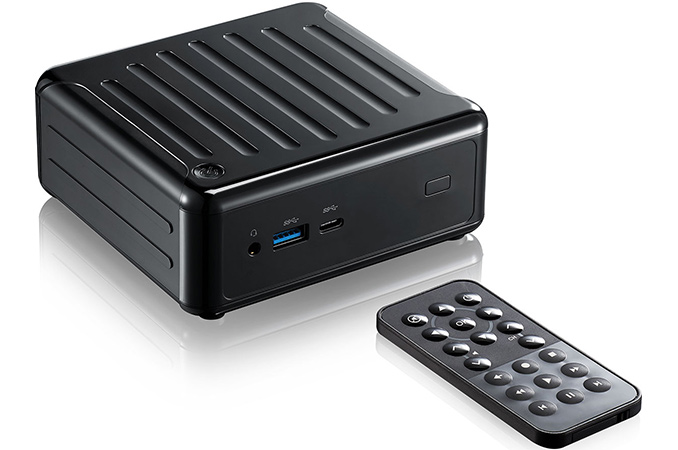
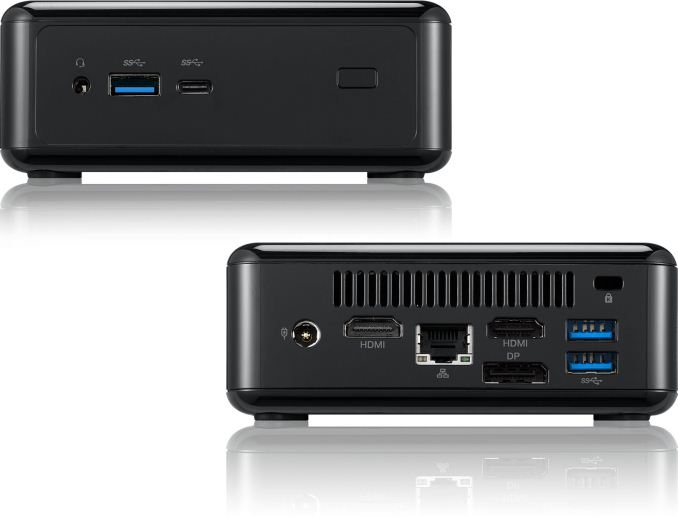


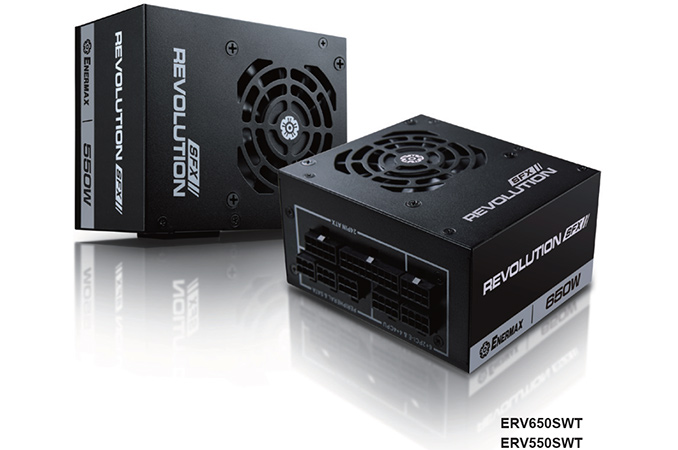



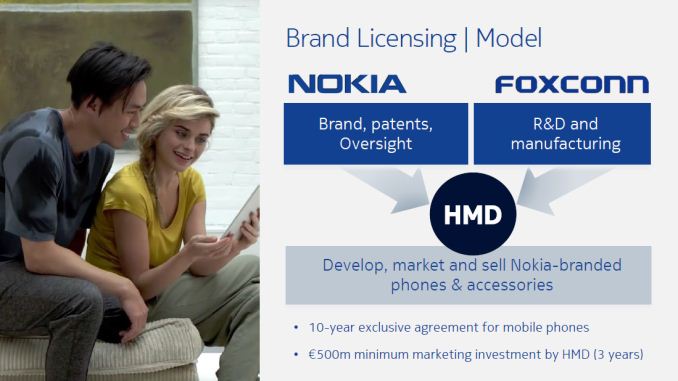
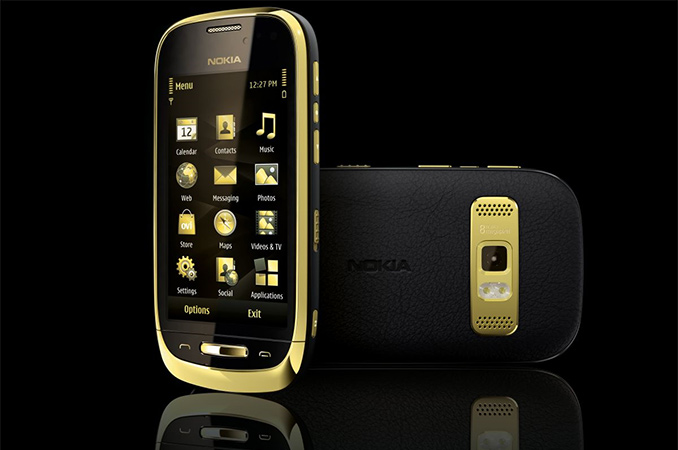
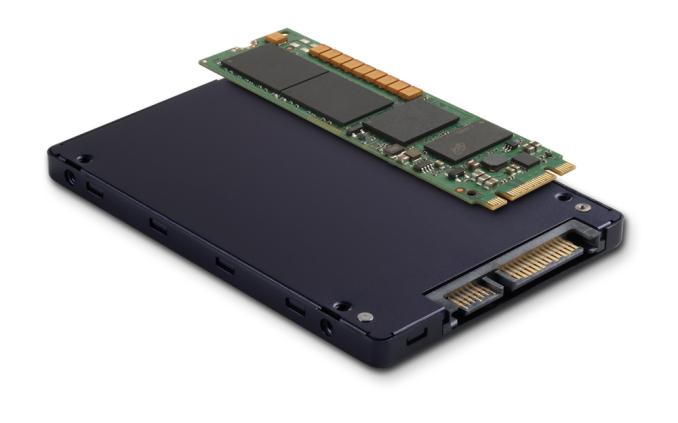
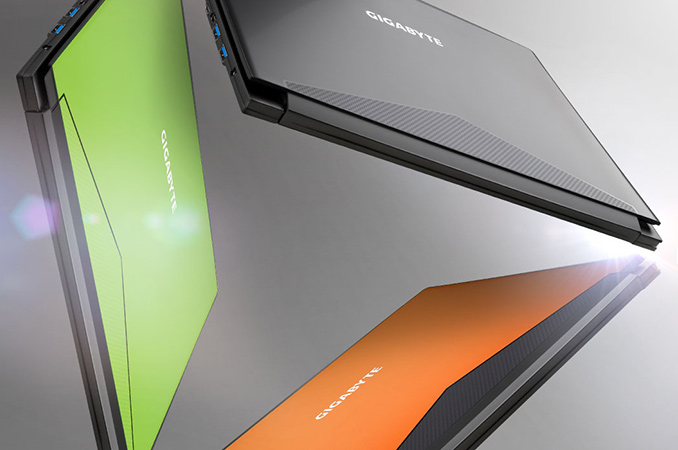
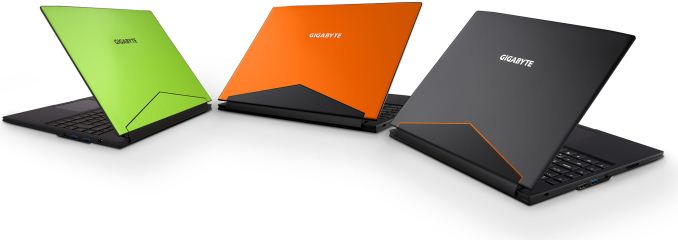
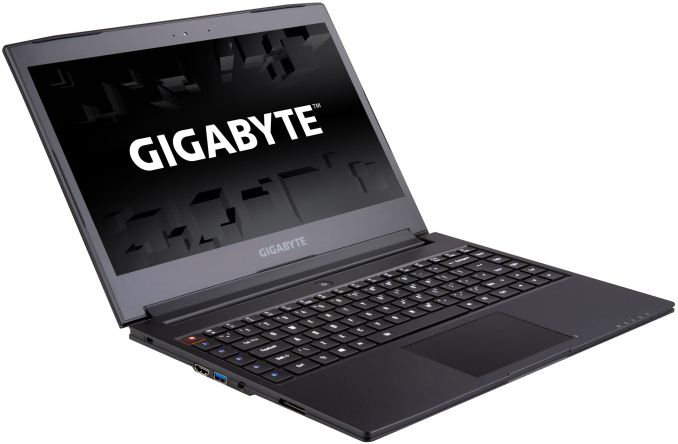

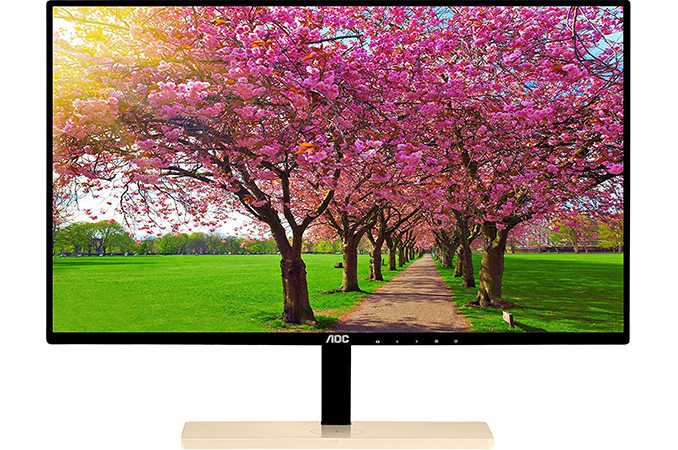



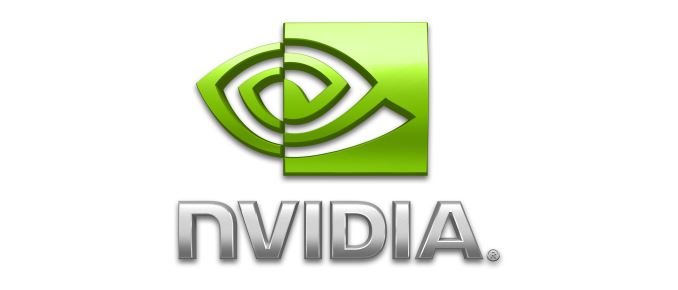
















Bookmarks